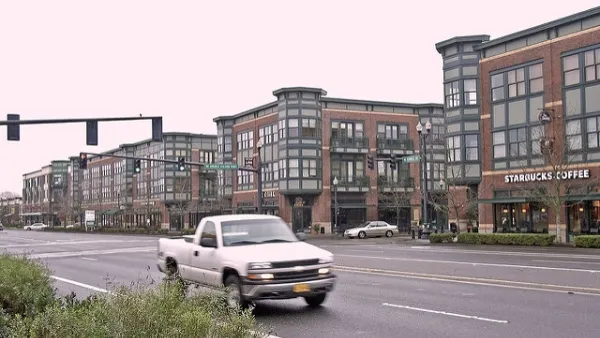The island nation is mandating mid-density zoning requirements and transit-oriented development in an effort to increase housing affordability and encourage compact development.

Responding to the rise in housing costs that has affected even remote corners of the world, New Zealand recently passed "sweeping zoning reform legislation" that encourages mid-density housing development. As Ryan Greenaway-McGrevy writes, these reforms provide some valuable lessons for other countries.
For decades, New Zealand's housing policy essentially omitted middle-density, multi-unit housing types like rowhouses or mid-rise apartment buildings, favoring single-family homes and high-rise apartment buildings in limited urban areas. But now, with significant population growth raising demand for the country's limited housing, lawmakers from across the political spectrum are seeking ways to slow the growth of housing costs. In addition to the new Medium Density Residential Standard, policies include "a capital gains tax targeted at housing speculation, a ban on foreign investment in residential housing, fast-tracked inclusive housing developments, and state-subsidized housing development projects." In 2020, as part of its National Policy Statement on Urban Development, the government mandated higher-density development near transit lines.
Kiwis saw success with upzoning policies in Auckland, where the city's Auckland Unitary Plan (AUP) led to a sharp increase in permits for attached housing and more development in the city's inner suburbs. But although New Zealand's policy experiments show promising results in stimulating construction, it remains to be seen whether increased affordability will follow suit, and how long it will take for supply to meet demand.
FULL STORY: New Zealand’s bipartisan housing reforms offer a model to other countries

National Parks Layoffs Will Cause Communities to Lose Billions
Thousands of essential park workers were laid off this week, just before the busy spring break season.

Retro-silient?: America’s First “Eco-burb,” The Woodlands Turns 50
A master-planned community north of Houston offers lessons on green infrastructure and resilient design, but falls short of its founder’s lofty affordability and walkability goals.

Delivering for America Plan Will Downgrade Mail Service in at Least 49.5 Percent of Zip Codes
Republican and Democrat lawmakers criticize the plan for its disproportionate negative impact on rural communities.

Test News Post 1
This is a summary

Test News Headline 46
Test for the image on the front page.

Balancing Bombs and Butterflies: How the National Guard Protects a Rare Species
The National Guard at Fort Indiantown Gap uses GIS technology and land management strategies to balance military training with conservation efforts, ensuring the survival of the rare eastern regal fritillary butterfly.
Urban Design for Planners 1: Software Tools
This six-course series explores essential urban design concepts using open source software and equips planners with the tools they need to participate fully in the urban design process.
Planning for Universal Design
Learn the tools for implementing Universal Design in planning regulations.
EMC Planning Group, Inc.
Planetizen
Planetizen
Mpact (formerly Rail~Volution)
Great Falls Development Authority, Inc.
HUDs Office of Policy Development and Research
NYU Wagner Graduate School of Public Service





























